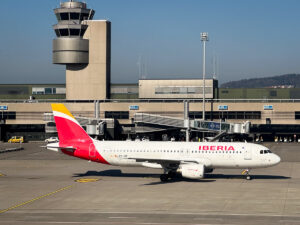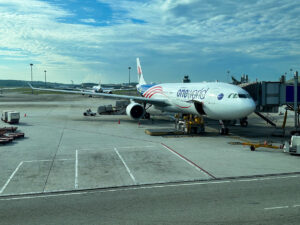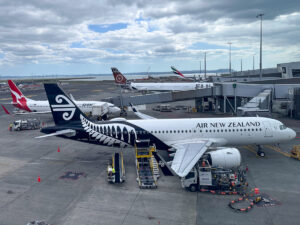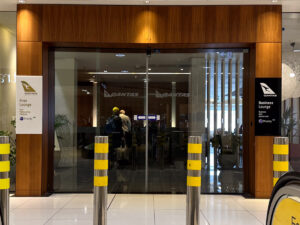
Australia is planning to build the first paved airport in Antarctica. Davis Aerodrome will be open year-round and feature a 2,700m runway capable of handling Boeing 787s and Airbus A330s.
A site has now been chosen and planning is well underway, with a Request for Tender released. The project is still subject to environmental approvals.
Why is this airport being built?
The new Davis Aerodrome will provide the infrastructure needed for Australia to step up its involvement in Antarctica, a goal announced by the Australian government in 2016. The new ice-free site, on a ridge near Davis Station in the Australian Antarctic Territory, has been chosen for its favourable meteorological and other conditions.
“We’ve been able to design the alignment of the runway to suit the prevailing winds and topography of the site,” Davis Aerodrome Project Manager Stuart Gibson said.
“Another important reason for selecting the ridge site is because its location and alignment will minimise disturbance to wildlife populations in the region, such as penguins and seals.”
Currently, Wilkins Aerodrome near Casey Station is the only Australian airfield in Antarctica. It is capable of handling specially-configured military aircraft, and passengers are transported there on Airbus A319LR charter flights. The trip from Hobart to Wilkins Airport takes around 4.5 hours, and the aircraft (with only 38 seats) is capable of operating a return flight from Hobart without refuelling.
The problem with the current airport, which is located on an ice field, is that it is subject to extreme weather conditions and only operational from October to March. It also needs to close for around six weeks – and potentially longer in future due to global warming – during summer as the warmer temperatures (above -5°C) make it too dangerous for planes to land on the ice. It can only handle certain types of aircraft and operating the airfield is a complex exercise (even for Antarctic standards).
The unique challenges of building an airport in Antarctica
Building an airport anywhere is a major and complex construction project. It took 8 years just to build a new runway at Brisbane Airport, which happens to open today. But building in Antarctica presents a host of other unique challenges.
All of the materials needed to build the cement runway, taxiways and apron will need to be transported to Antarctica by ship. In total, 11,500 cement elements weighing 10 tonnes each will be prefabricated in Australia and then sent by ship to the airfield site for assembly. The project will also involve the construction of buildings, lighting, firefighting facilities and other services necessary for a fully-functioning, year-round airport in the middle of nowhere. A new wharf and road from the airport to Davis Station will also be constructed.
Before this can even begin, other infrastructure will need to be built at Davis Station – a process that will itself take around seven years.
A possible diversion point for commercial flights
Currently, twin-engine aircraft operating southern polar routes such as Sydney-Santiago are limited in how far south they can fly due to EDTO/ETOPS rules. These require aircraft with two engines to remain within a certain distance of a suitable diversion airport at all times.
This has not been an issue for Qantas so far, as it has used Boeing 747s on routes like Sydney-Johannesburg until now. But with the 747s now being retired, Qantas will use twin-engine Boeing 787s on these routes when they resume.
There is currently no suitable year-round diversion airport for large aircraft in Antarctica. This can result in twin engine aircraft needing to take long detours and is a major reason why Virgin Australia’s attempt at flying direct from Melbourne to Johannesburg with Boeing 777s failed.
The new Davis Airport could also make unique commercial flight routes like Buenos Aires-Perth more feasible. Norwegian Air Argentina announced its intention to launch Buenos Aires-Perth-Singapore flights in 2018, but the flight paths would need to be adjusted to account for current EDTO rules (as well as wind currents).
It’s definitely a promising development. Perhaps, one day, we could even see commercial flights available from Australia to Antarctica. Currently, the only commercial means of travelling to the southern continent is by cruise ship. But before you get too excited, the project is still a long way off completion. The Australian Antarctic Division expects the airport to be operational by 2040. (Impressively, that could still be faster than the time it has taken to build a new airport in Berlin!)















































































